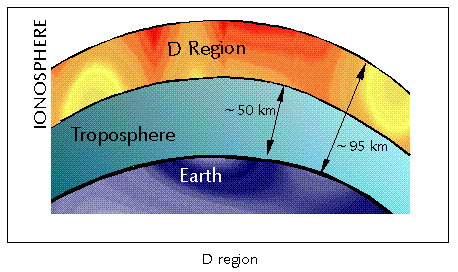Search Keyword By: D
D channel
In ISDN, the 16-kb/s segment of a 144-kb/s, full-duplex subscriber service channel that is subdivided into 2B+D channels, i.e., into two 64-kb/s clear channels and one 16-kb/s channel for the ISDN basic rate. Note 1: The D channel is usually used for out-of-band signaling. The two 64-kb/s clear channels are used for subscriber voice and data services. Note 2: The D-channel specifications are addressed in the CCITT (now, the ITU-T) Recommendation for the Integrated Services Digital Network (ISDN). Note 3: The D-channel may be 64 kb/s for the primary rate ISDN service.
D layer
See D region, ionosphere.
D region
That portion of the ionosphere existing approximately 50 to 95 km above the surface of the Earth. Note: Attenuation of radio waves, caused by ionospheric free-electron density generated by solar radiation, is pronounced during daylight hours. Because solar radiation is not present at night, ionization ceases, and hence attenuation of radio waves ceases.

D*
(Pronounced “D-Star”) See specific detectivity.
D-4
A framing standard for traditional time-division multiplexing, which standard describes user channels multiplexed onto a trunk that has been segmented (framed) into 24 bytes of 8 bits each. Note: The multiplexing function is performed in the D-4 framing structure by interleaving bits of consecutive bytes as they are presented from individual circuits into each D-4 frame.
D-A
Abbreviation for digital-to-analog. See digital transmission system.
D-Star(D*)
Synonym specific detectivity.
D1
See channel bank.
D2
See channel bank.

